THE CHIARINI 2 AREA
Chiarini 2 is an area adjacent to a former illegal landfill located on the outskirts of Bologna (IT). The site was subject to illegal disposal of wastes, due to the proximity of numerous craft and industrial activities, that were present in the area after the Second World War, in fact the area was used to as a dumping ground for the waste and residues of the war. Between 1996 and 2003 a characterization and monitoring activity of the contaminated site began, detecting critical thresholds for various pollutants (heavy metals, heavy hydrocarbons (C>12) and PCBs. Between 2005 and 2009 the main body of the landfill (“Chiarini 1”, green area in the figure below on the right) was subjected to a decontamination process through the removal and ex-situ washing of contaminated soil and the replacement of healthy soil. This part of the area has now been returned to the community through the creation of social gardens. However, during this remediation process a further contaminated area adjacent to the remediated one was characterized: “Chiarini 2” (in yellow in the figure 1 (right)). This area was capped with a HDPE cover (figure 1 (left)), fenced and subsequently monitored in order to make sure that there was no percolation of the subterranean aquifer into the surrounding ‘clean’ areas.
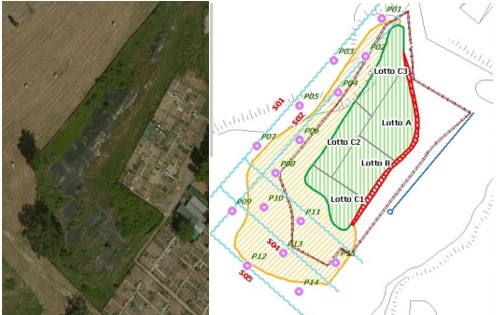
On the right a tencical image for the division of the two areas during the reclamation process (credits ARPAE)
THE BEGINNING OF THE COLLABORATION
In the spring of 2021, the Regional Agency for Environmental Protection of the Emilia Romagna Region (ARPAE) indicated to researchers at the University of Bologna (UNIBO) the “Chiarini 2” site as a potential area for experimentation for the GOLD H2020 project. Due to the multiple sources of the pollution, many unknown, the site was annexed as contaminated land and managed by the local authority. However, as a result of the huge expenditure of time and money to remediate the adjacent site (Chiarini 1) this site (Chiarini 2) was left abandoned, with just an impermeable sheet to cover the site and stop leaching of contaminants into the adjacent areas. Therefore the use of the area for phytoremediation experiments, using biomass crops and biological agents, is appreciated not only for the purposes of the project, but also to:
- Update the characterization and contamination status of the site;
- Verify the validity of other remediation methods tested in the area and to assess the potential implementation of phytocapping (permanent vegetation cover, envisaged as a possible measure of protection and safety on landfills);
- Restore and enhance the area for the local community through GOLD research activities.

Therefore, in the summer of 2021, an agreement was subsequently signed between the UNIBO and the Emilia Romagna Region, with the endorsement of the Municipality of Bologna, to allow the research activities foreseen in WP1 of the GOLD project to proceed.
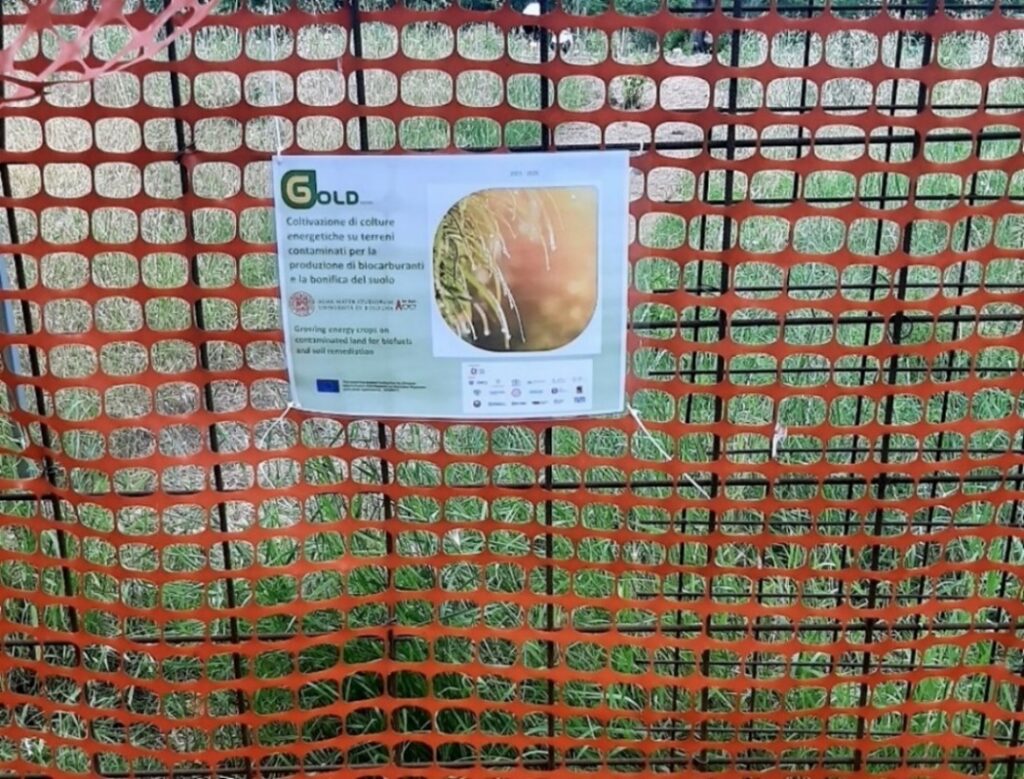
The first step was a soil sampling campaign carried out in collaboration between UNIBO and ARPAE. Some enabling works were carried out prior to sampling, such as the removal of the thick shrubby vegetation growth, the removal of the HDPE cover sheets in the area identified for the crop trial, the partial leveling of the area, and finally land preparation to planting standard. All operations were carried out in agreement with the institutions and stakeholders involved.
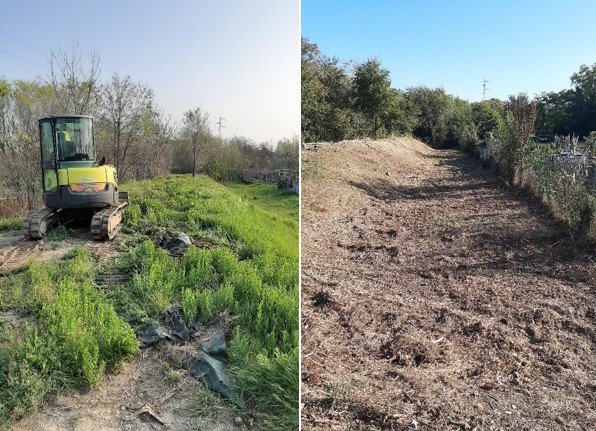
COMMUNITY INVOLVMENT
At the same time, community engagement was carried out to illustrate the aims of the project, its scientific foundations and reassurance that the contaminated soils would be properly managed. This activity was welcomed both by the community active in the social gardens, and by the representatives of the neighbourhood who made themselves available to allow and facilitate all the activities planned on the area.
At the start of the field tests, in the spring of 2022, a small visit in the area was organized in collaboration with a local recreational cultural association (ANCeSCAU). On this occasion, UNIBO researchers were available to explain the role of crops for biomass production, the phytoremediation processes, and the role of biological agents, connected to the GOLD research activities.
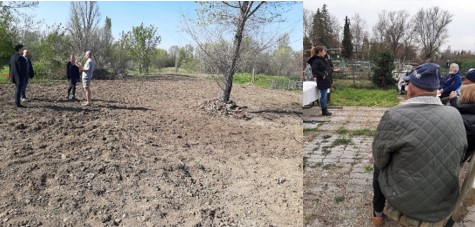
PRELIMINARY RESULTS
This collaboration between university, public stakeholders, and the local community, has contributed to the following:
- The start and the correct advancement of both the preliminary experimentation in the greenhouse and the first year of the subsequent field trials, foreseen in the GOLD project.
- An updated characterization of the contamination status, after the sampling of the soil and plants on site, conducted through a collaboration between UNIBO and ARPAE. Thanks to this activity ARPAE has been able to update the Risk Analysis for the area (a technical document required by Italian law).
- The start of a remediation process for the recovery of a degraded area that has already begun to benefit the local community. Community enhancement is also one of the aims of the GOLD project.
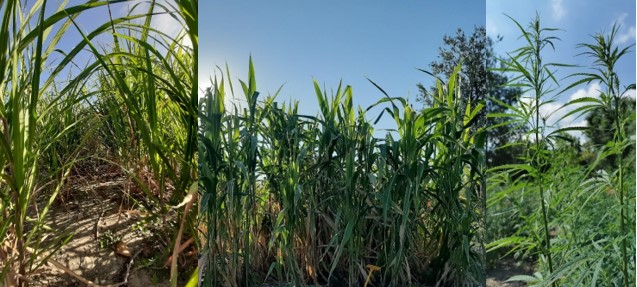
ACKNOWLEDGMENTS
Institutions
University of Bologna (UNIBO)
Regional Agency for Environmental Protection of the Emilia Romagna Region (ARPAE)
Emilia Romagna Region
Municipality of Bologna
Associations with which the project came into contact
Orti Comunali Boschetto lungo Reno
ANCeSCAO
Centro Culturale ricreativo culturale “Rosa Marchi”
Quartiere Borgo Panigale – Reno

